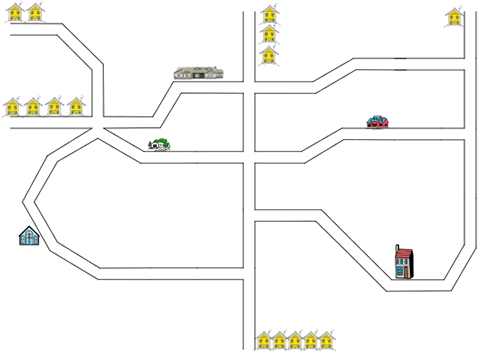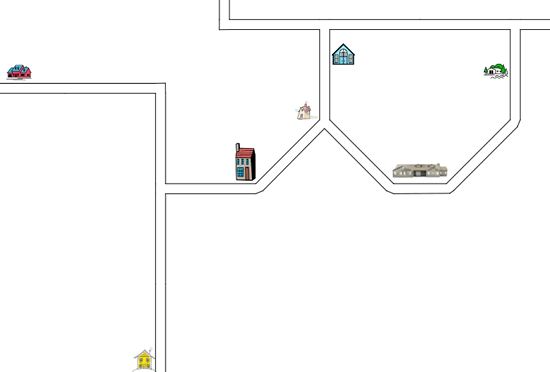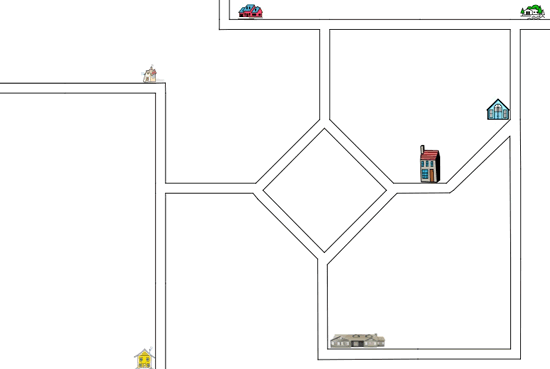Copyright © University of Cambridge. All rights reserved.
'Six Places to Visit' printed from https://nrich.maths.org/
Show menu
Why do this problem?
This activity is a good one to try once children have some experience of turning and the measurement of the angles in degrees. It can also be an opener for looking at the angle turned rather than what might be called the internal angle.
Possible approach
This kind of activity can be best introduced by a pupil walking a path that requires some turning at junctions. You could set up a 'course' in the school hall or outside which involves going round obstacles, for example. You could then challenge pupils to imagine a bird's-eye view of the situation and sketch it. Then, a route could be drawn on the sketch and instructions given by one child
to direct another child along the route. This could be an opportunity for the class to develop the necessary language so that the instructions are accurate.
When working on the problem, it might be useful for children to have a copy of this sheet of the maps. The angles used are all multiples of $45^\circ$ so there will be no need for children to have protractors, rather they should be able to justify the amount
of turn for example by referring to fractions, or multiples, of a right angle.
Key questions
How much of a turn is there at this junction or bend in the road?
How are you finding the angles each time?
Possible extension
Older or more experienced pupils could try this third map with different places (where there are $1, 2, 3, 4$ or $5$ yellow houses) to start:

Here is a sheet to print which contains this map.
Childrencould find different lengths of routes to each of the five places to visit as well.
Possible support
Some of the play-mats that have road systems on them would be useful. A programable robot can be a useful aid as well.

